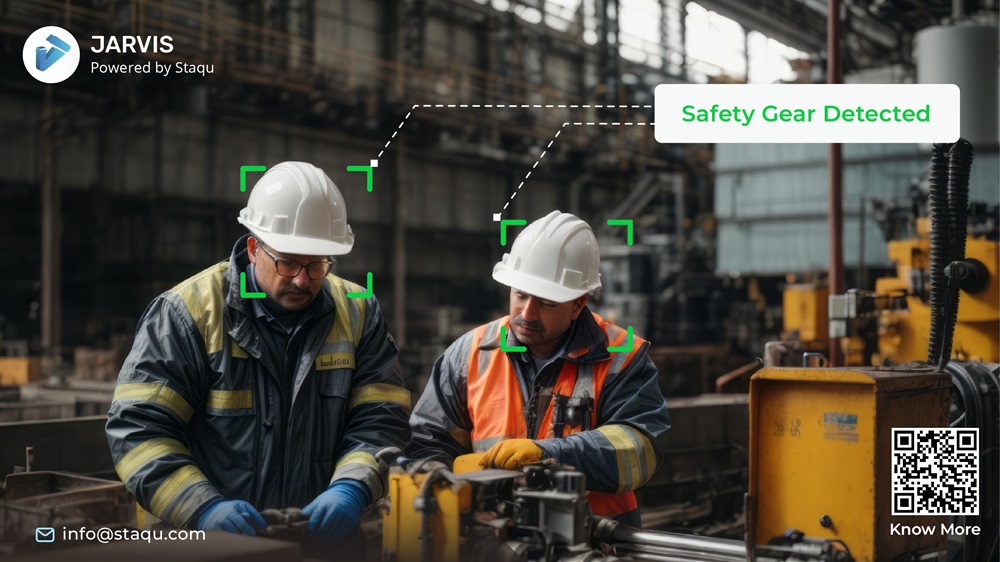Improving Worker Productivity with Video Analytics: Harnessing the Power of AI

In the quest for operational excellence, industries are perpetually seeking innovative strategies to enhance productivity and efficiency. Video analytics, fueled by advancements in artificial intelligence (AI) and machine learning, emerges as a transformative tool in this endeavor, offering unparalleled insights into workplace dynamics and worker behavior. This article delves into how video analytics is revolutionizing the way industries optimize worker productivity, highlighting the technological intricacies and practical applications of this powerful tool.
The Rise of Video Analytics in Industrial Applications
The advent of video analytics marks a significant milestone in the digital transformation journey of industries. At its core, video analytics leverages AI to analyze video footage in real-time, extracting valuable data and insights that were previously inaccessible or too cumbersome to obtain through manual means. This technology has found applications in various domains, from enhancing security and safety to optimizing operations and, importantly, boosting worker productivity.
Understanding Worker Productivity in the Modern Workplace
Worker productivity is a critical determinant of an industry’s success, defined by the efficiency and effectiveness with which tasks and operations are completed. However, measuring and improving productivity has always been a complex challenge, involving numerous variables such as work environment, task complexity, worker engagement, and operational workflows. Enter video analytics, a tool that offers a new dimension of visibility into these factors, enabling a more nuanced understanding and strategic enhancement of productivity.
Book A Free Demo
Video Analytics: A Game-Changer for Productivity Enhancement
Real-Time Performance Monitoring
Video analytics allows for the continuous monitoring of worker performance in real-time, identifying not just inefficiencies but also spotlighting best practices. By analyzing the speed, accuracy, and methods used by workers in completing tasks, managers can glean insights into performance trends, pinpointing areas for improvement and recognizing exemplary performance.
Workflow Optimization
One of the key benefits of video analytics is its ability to identify bottlenecks and inefficiencies in operational workflows. By tracking the movement of workers and materials through production lines or workspaces, it can highlight areas where delays occur, resources are underutilized, or processes can be streamlined. This information is invaluable for reorganizing workflows, minimizing idle time, and ensuring a smoother operational tempo.
Safety and Compliance Monitoring
Worker productivity is closely linked to the safety and healthiness of the work environment. Video analytics enhances workplace safety by monitoring compliance with safety protocols, detecting potential hazards, and alerting managers to take corrective action. A safe workplace reduces downtime caused by accidents and health issues, directly contributing to higher productivity levels.
Training and Development
Through the analysis of video data, video analytics can identify skill gaps and training needs within the workforce. By understanding the specific areas where workers struggle or where errors are most common, customized training programs can be developed to address these issues, improving overall workforce competence and productivity.
Enhancing Worker Engagement
Video analytics can also play a role in boosting worker engagement and morale, which are critical components of productivity. By recognizing and rewarding efficient work practices and achievements, organizations can foster a more motivated and engaged workforce. Additionally, the insights gained from video analytics can be used to design more ergonomic and worker-friendly workspaces, further enhancing productivity.
Implementing Video Analytics: Considerations and Best Practices
Adopting video analytics for productivity enhancement is not without its challenges. Concerns around privacy and the potential for perceived surveillance need to be carefully managed. Transparent communication about the purposes and benefits of video analytics, along with strict adherence to privacy laws and ethical guidelines, is essential. Moreover, the success of video analytics initiatives depends on the integration of technological solutions with organizational culture and worker engagement strategies.
Case Studies: Video Analytics in Action
Real-world applications of video analytics illustrate its potential to transform workplace productivity. For instance, a manufacturing facility that implemented video analytics to monitor assembly lines saw a significant reduction in production errors and an increase in output by optimizing worker placement and task allocation based on data-driven insights. Similarly, a logistics company used video analytics to improve the efficiency of its sorting and packing operations, leading to faster order processing times and higher customer satisfaction.
The Future of Workplace Productivity
As video analytics technology continues to evolve, its capacity to enhance worker productivity will only grow. Future advancements are expected to bring even more sophisticated analytical capabilities, including predictive analytics for forecasting potential productivity bottlenecks and integrating with other IoT devices for a comprehensive view of workplace dynamics.
Conclusion: Embracing Video Analytics for a Productive Future
Video analytics stands at the forefront of the industrial revolution, offering a powerful tool for enhancing worker productivity. By providing real-time insights into workplace operations, safety compliance, and worker performance, it enables organizations to make informed decisions that drive efficiency and effectiveness. As industries continue to navigate the challenges of the modern economic landscape, the strategic implementation of video analytics will be pivotal in securing competitive advantage and achieving operational excellence. Embracing this technology is not just about enhancing productivity; it’s about shaping the future of work.